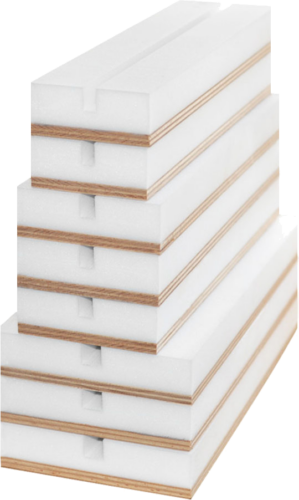




This entomological spreading board with a Plastazote base is a professional tool designed for preparing and drying orthopteran insects (e.g., grasshoppers, crickets) and other larger insects. The board consists of a sturdy wooden plank with a glued 25 mm thick reinforced Plastazote foam layer. Such boards are widely used by entomologists worldwide due to their convenience and efficiency.
Key Features:
High-quality materials: The base is made of solid wood, providing stability and durability. A 25 mm thick reinforced Plastazote foam layer is glued on top, resistant to deformation and allowing easy pinning of insects.
Versatility: Especially suitable for orthopteran insects, but can also be used for spreading and drying wings of other larger insects such as butterflies and beetles.
Ease of use: The Plastazote surface allows pins to be inserted easily without additional resistance, unlike wooden boards. It is softer, reducing the risk of damaging delicate insect structures.
Advantages compared to wooden boards:
Lighter weight, making transport and field use easier.
Resistance to moisture and deformation ensures a longer lifespan.
Easier pin insertion requiring less pressure, reducing the risk of damage to insects or injury to fingers.
Disadvantages compared to wooden boards:
Lower mechanical strength compared to some wooden boards.
Less aesthetically appealing to entomologists who prefer the traditional wooden look and feel.
Usage Instructions:
Choose the appropriate size board according to the species and size of the insect.
Pin the insect into the Plastazote surface with its body centered in the groove and wings spread over the board.
Secure the wings with pins and/or special strips in the desired position.
Leave the insect to dry in a well-ventilated, dry place for about 2 weeks.
After drying, carefully remove the pins and transfer the insect to a display box or collection.
This entomological spreading board with Plastazote base is an excellent choice for both beginners and experienced entomologists seeking to efficiently and safely prepare insect specimens for collections or scientific research.